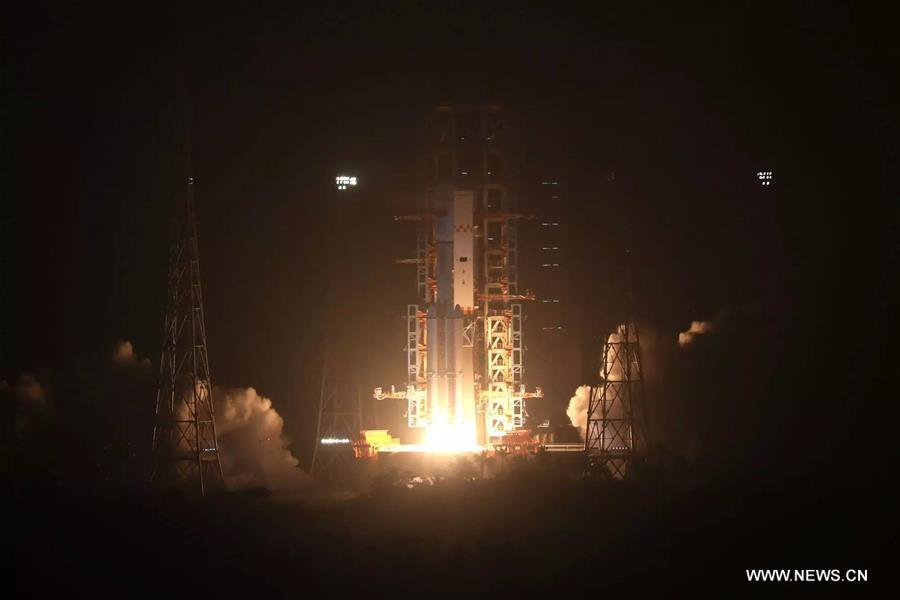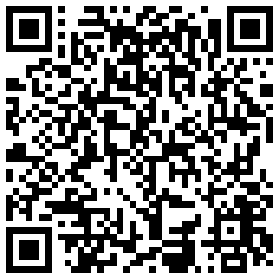By Tom McGregor, CCTV.com Panview commentator and editor
Beijing has set an ambitious goal to build a space station in space that will have Chinese astronauts living on it by 2022. The space station dubbed, Tiangong-2 is already orbiting 390 kilometers above the Earth.

China's first cargo spacecraft Tianzhou-1 blast off from Wenchang Space Launch Center in south China's Hainan province, April 20, 2017. (Photo from Xinhua/Ju Zhenhua)
Tiangong-2 remains unmanned, but a series of experiments have been conducted to make the spacecraft ready for human habitation within a few years.
One of the crucial steps to keep the space station functional in orbit is to ensure a steady supply of fuel and necessities that can be delivered to the Tiangong-2 periodically.
On April 20, 2017, China’s carrier rocket, Long March-7 Y2, had lifted off the country’s first cargo spacecraft, Tianzhuo-1 from the Wenchang Space Launch Center in the southern Chinese island Province of Hainan.
Completing tasks
Tianzhuo-1 is expected to conduct a series refueling and perform numerous tests. In June 2017, the cargo spacecraft released a satellite, CubeSat, while in orbit for the first time in China’s history.
CubeSat was onboard Tianzhou-1 for more than 2 months before its release. It’s an experimental satellite, weighing less than 1 metric tons.
The task was to determine if a Chinese spacecraft can discharge technologies, such as separating and unlocking and connectivity while in orbit.
China.Org reports that CubeSat after its release was docked on Tiangong-2 to perform separate operations.
The China Aerospace Science and Technologies Corporation (CASTC) said the mission was successful and had set the stage for carrying out automated and fast dockings on Tiangong-2 in the future.
The space station has been successfully refueled, for Tiangong-2 to carry on with its mission in the space. CASTC also wanted to test different methods for refueling.
Introducing upgrades
“The Tianzhou-1 mission includes the breakthrough of in-orbit in refueling and other key technologies needed to build a space station, laying a foundation for future space station operations,” Bai Mingsheng, chief designer of the cargo spacecraft, told Xinhua.
Only the US and Russia have accomplished to refuel their space stations in orbit.
Tianzhou-1 stands 10.6-meters tall with maximum diameter - 3.35-meters. It’s maximum takeoff weight was 13.6 tons and can carry 6 tons of supplies.
The cargo ship is larger than Tiangong-2, which is 10.4-meters in length, 3.35-meters in diameter and weighs 8.6 tons. The Chinese are the first to construct a cargo spaceship that is larger than its connecting space station.
When refueling, Tianzhou-1 will perform docking at separate times. Chinese aerospace engineers recognize that refueling in orbit is much more challenging than on land.
Types of testing
Tianzhou-1 docking were performed in three stages: First, aerospace engineers tested controlling capabilities of cargo spacecraft while hovering above Tiangong-2. Second, to approach space station from a different direction to test its ability to dock under alternative scenarios. Third, to utilize a fast and automated docking system.
Normally, it takes five days for Tianzhou-1 to refuel Tiangong-2, but the fast-docking method can accelerate the process to less than six hours.
CASTC had performed other successful experiments, such as testing Ethernet for communications on Tianzhou-1.
“Unlike previous spacecraft, Tianzhou-1 for the first time uses the Ethernet technology, which will help verify technologies for Internet communications aboard the future space station,” Feng Shuyi, director of tracking communications technology for Tianzhou-1 under the Earth Institute of CASTC, told China Daily.
Ethernet is the most commonly used local area network (LAN) technology that facilitates information transmission from anywhere, which enables efficient and quick transmission of data.
Medical testing
Since the overall objective of China’s space station is to allow humans to live in space for a lengthy period of time, scientists and doctors have performed medical experiments to learn if families can survive there.
For instance, is it safe to procreate and raise a child in space?
“Another research area is to observe the process of embryonic stem cells differentiation into germ stem cells in space,” Li Xuzhi, deputy chief designer - Space Station Application System of China’s Manned Space System, told CGTN.
Li added, “This is for the long-term goal of space immigration. China has already done some research on that, including making babies while traveling in space.”
Sounds intriguing that such tests were performed.
Staying on schedule
The successful testings and experiments that were performed on Tianzhou-1, along with its ability to keep Tiangong-2 in orbit has demonstrated how Chinese scientists have made tremendous headway in space exploration.
The United States and Russian space have both had a head start, by launching spacecraft into orbit more than 50 years ago. China didn’t start its space missions in orbit until a few years ago.
In a short time-frame, China’s space team has soared ahead and would likely lead the world on future space missions, satellites in orbit and could complete its space station on time by 2022.
If so, the world will look with wonder over China’s space adventures and achievements.
Tmcgregorchina@yahoo.com
(The opinions expressed here do not necessarily reflect the opinions of Panview or CCTV.com. )

Panview offers a new window of understanding the world as well as China through the views, opinions, and analysis of experts. We also welcome outside submissions, so feel free to send in your own editorials to "globalopinion@vip.cntv.cn" for consideration.
















